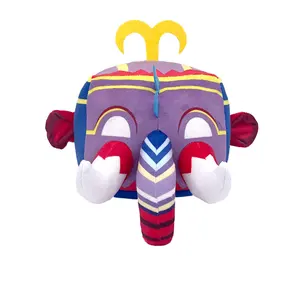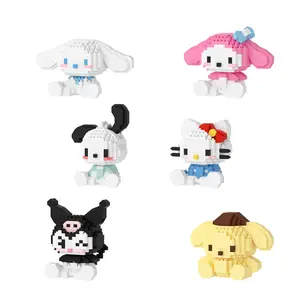Sektörünüzde popüler






Yeni özel soyut vers' 'boyama şekil portre resimleri çiftler erkekler ve kadınlar yetişkinler için sayılar tarafından yağlıboya çıplak boyama

₺56,52
Minimum Sipariş Miktarı: 300 Adet



Sayılar kitleri tarafından Diy boyama özel el yapımı zarif hediyeler için kendi yağlıboya sanat fotoğrafları oluşturmak için
₺93,86 - ₺122,28
Minimum Sipariş Miktarı: 1 Kutu







Fabrika toptan yunus elmas boyama tam matkap AB matkap 5d Diy elmas nakış boyama okyanus sahne
₺37,00 - ₺50,70
Minimum Sipariş Miktarı: 2 Adet







Çiçek DIY el boyalı akrilik yağlıboya resim için tahta çerçeve çerçeve sanat

₺59,95 - ₺70,22
Minimum Sipariş Miktarı: 20 Adet
Parça başına nakliye: ₺81,52







Diy elmas manzara boyama taklidi özel elmas nakış resimleri Diy 5d elmas boyama numarası kitleri tarafından
₺37,00 - ₺43,85
Minimum Sipariş Miktarı: 10 Adet







Toptan fiyat doğa boyama emaye Pin manzara rozeti sırt çantası giyim özel broş takı aksesuarları arkadaş için hediye
Gönderime Hazır
₺13,02
Minimum Sipariş Miktarı: 1 Adet
Parça başına nakliye: ₺147,97






Toptan fiyat doğa boyama yumuşak emaye iğne kişilik rozeti sırt çantası giysi özel broş aksesuarları hediye arkadaş için
₺3,43 - ₺11,31
Minimum Sipariş Miktarı: 10 Adet
Parça başına nakliye: ₺411,03






Manzara yağlıboya emaye pimleri sihirli çekim ok gökkuşağı günbatımı bulutlar dalga balina broş yaka rozeti doğa takı hediyeler
Gönderime Hazır
₺13,71 - ₺16,45
Minimum Sipariş Miktarı: 2 Adet
Parça başına nakliye: ₺74,67






Çerçeveli balina yağlıboya çocuk odası dekorasyon asılı resim
Gönderime Hazır
₺479,53 - ₺1.952,37
Minimum Sipariş Miktarı: 1 Adet
Parça başına nakliye: ₺1.624,58






Saf el boyalı büyük balina yağlıboya modern basit soyut derin deniz yatay plaka dekoratif asılı resim sergisi
₺1.335,83 - ₺1.541,34
Minimum Sipariş Miktarı: 1 Adet






Yenilikçi tasarım özel duvar balina pembe yağlıboya çam ahşap özelleştirilmiş ev duvar süsü baskı için ev ofis dekorasyonu

₺42,82 - ₺44,19
Minimum Sipariş Miktarı: 500 Adet





DIY dijital yağlıboya büyük balık çocuk el-boyalı yaratıcı mavi balina dekoratif boyama toptan
Gönderime Hazır
₺74,67 - ₺102,08
Minimum Sipariş Miktarı: 2 Adet
Parça başına nakliye: ₺689,50
İlgili Aramalar:
yağlıboya ile yaprakdafen yağlıboyabatı yağlıboyaromantik el yapımı yağlıboyayağlıboya ile glitteryağlıboya portre yağlıboyamanga yağlıboyagüzel karikatür yağlıboyaşef yağlıboyayunus sanat yağ boyamayağlıboya için koridordekoratif figür yağlıboyayağlıboya sınıfel yapımı rakam yağlıboyasoyut sanat yağ boyama






Büyük orijinal balina yağlıboya tuval, büyük orijinal sualtı okyanus sanat mavi duvar dekor, oturma oda duvar dekoru
₺681,62 - ₺3.764,30
Minimum Sipariş Miktarı: 2 Adet






Modern ev oturma odası dekorasyon boya duvar sanatı hayvan balina sayılar tarafından Diy boya tuval boyama
₺65,08 - ₺99,34
Minimum Sipariş Miktarı: 30 Adet






Yeni tasarım tuval üzerine yağlıboya diy boyama tuval üzerine sayılar 3d vahşi balina 3D045
₺93,17
Minimum Sipariş Miktarı: 30 Adet






CHENISTORY toptan çerçevesiz boyama numaraları kiti katil balina duvar sanatı soyut resim tuval
Gönderime Hazır
₺30,83 - ₺61,66
Minimum Sipariş Miktarı: 1 Takım
Parça başına nakliye: ₺262,03






Çocuklar için sayılar tarafından DIY boyama ay gece gökyüzü balina yağlı boya numaraları Anime Gönderime Hazır
Gönderime Hazır
 Gönderime Hazır
Gönderime Hazır₺57,89 - ₺84,61
Minimum Sipariş Miktarı: 5 Poşet
Parça başına nakliye: ₺217,85






El yapımı diğer dekoratif Diy islam natürmort deniz manzarası soyut Modern kristal porselen hayvan sanat duvar manzara resimleri
₺616,54 - ₺684,36
Minimum Sipariş Miktarı: 10 Adet
Parça başına nakliye: ₺4.143,47





Özelleştirilmiş el boyalı modern soyut yağlıboya oturma odası için yatak odası otel restoran duvar dekor
₺1.674,93 - ₺2.363,39
Minimum Sipariş Miktarı: 10 Adet






Paintboy-40 * 50 yağlıboya numarası hayvan okyanus, balina, deniz özelleştirilebilir toptan
₺95,91 - ₺171,26
Minimum Sipariş Miktarı: 200 Adet






Çin yağlıboya tablo tuval duvar sanatı el boyalı mercan düz klasik tuval duvar sanatı boyama
₺764,51 - ₺1.019,34
Minimum Sipariş Miktarı: 2 Adet




Rustik duvar asılı el işi sanat İlkel çiftlik dekor ile kaprisli balina ahşap duvar sanat boyama

₺581,95 - ₺684,70
Minimum Sipariş Miktarı: 100 Adet
Parça başına nakliye: ₺7.679,99






YESCOM sıcak satış mavi balina Cetacean dekoratif oturma odası asılı boyama numaraları ile Diy dijital yağlıboya çerçeve
₺53,10 - ₺80,50
Minimum Sipariş Miktarı: 10 Adet






Doğa okyanus hayvan balina ihlal kuyruk yunus duvar sanatı Nordic Poster dalgalar deniz manzarası tuval baskı boyama
₺205,52 - ₺678,19
Minimum Sipariş Miktarı: 2 Adet






Altın deniz balina yelkenli tuval duvar asma ev dekorasyonu Nordic posteri baskılar tuval üzerine yağlıboya posterler baskı sanat resmi
Gönderime Hazır
₺31,17 - ₺58,92
Minimum Sipariş Miktarı: 1 Adet
Parça başına nakliye: ₺243,19






Deniz manzarası balina baskı posteri mavi balina tuval duvar sanatı balina çizim kambur hayvan boyama
₺68,17 - ₺170,92
Minimum Sipariş Miktarı: 1 Adet






Su ters saçılma üç boyutlu boyama küçük parçacık blok bulmaca oyuncak masa yağlıboya çocuk hediye
₺325,74 - ₺337,39
Minimum Sipariş Miktarı: 500 Adet






Modern oturma odası ev dekor Nordic posterler HD baskılar palmiye ağacı plaj deniz balina Islam duvar sanat asılı boyama

₺239,77 - ₺479,53
Minimum Sipariş Miktarı: 2 Takım
Parça başına nakliye: ₺812,80






100% el yapımı özel yaratıcı balina yağlıboya tuval
Gönderime Hazır
₺989,89 - ₺2.760,72
Minimum Sipariş Miktarı: 1 Adet
Parça başına nakliye: ₺1.086,14






H4 florence-mit Villa giriş kapısı çelik ses geçirmez giriş kapısı otantik yağlıboya lüks giriş kapıları
₺1.214.575,92 - ₺1.349.528,80
Minimum Sipariş Miktarı: 1 Birim






Yetişkinler için balina manzara tarafından DIY boya HandPainted yağlıboya resim tarzı ev dekorasyon özel fotoğraf el sanatları kitleri
Gönderime Hazır
₺99,34 - ₺154,14
Minimum Sipariş Miktarı: 2 Adet
Parça başına nakliye: ₺1.825,64






Mikailan 10*10cm sayılar tarafından DIY boyama karikatür hayvan çocuk sanat yağlıboya minyatür tuval ve boyama seti
Gönderime Hazır
₺13,02 - ₺25,35
Minimum Sipariş Miktarı: 240 Adet






Çocuk güvenli olmayan kurutma el yapımı DIY yağlı kar tanesi çamur dolum boyama inci kil
₺109,61
Minimum Sipariş Miktarı: 3 Kutu
Parça başına nakliye: ₺481,59






Toptan yatak odası lambası ışık boyama yağı ışıldayan boyama masaüstü küçük süsler yaratıcı LED gece ışıkları Gönderime Hazır
Gönderime Hazır
 Gönderime Hazır
Gönderime Hazır₺95,91 - ₺106,19
Minimum Sipariş Miktarı: 10 Adet
Parça başına nakliye: ₺162,70






ArtUnion sıcak Instagram lüks yıldızlı gökyüzü balina duvar Led ışık boyama uzun dikdörtgen poster çerçeveli ev dekor duvar sanatı
Gönderime Hazır
₺201,41 - ₺1.541,34
Minimum Sipariş Miktarı: 2 Adet
Parça başına nakliye: ₺812,80






Yeni varış soyut resim baskı kristal porselen resimleri balık deniz hayvanlar yağlıboyalar dekor duvar sanatları
₺582,29 - ₺856,30
Minimum Sipariş Miktarı: 5 Adet






110*40CM ışık lüks balina manzara kristal porselen modern cam duvar resimleri led ev dekor oturma odası için Gönderime Hazır
Gönderime Hazır
 Gönderime Hazır
Gönderime Hazır₺650,45 - ₺1.078,94
Minimum Sipariş Miktarı: 1 Adet
Parça başına nakliye: ₺3.102,89






Fabrika doğrudan balina ve ayı karikatür baskı yatak odası ahşap 3 parça set duvar sanatı çocuklar için Gönderime Hazır
Gönderime Hazır
 Gönderime Hazır
Gönderime Hazır₺20,56 - ₺95,91
Minimum Sipariş Miktarı: 2 Adet
Parça başına nakliye: ₺852,54






10 adet/grup DIY takı aksesuarları damlama kolye alaşım kolye akdeniz küpe göl mavi boyama yağ kolye
Gönderime Hazır
₺17,13 - ₺48,64
Minimum Sipariş Miktarı: 50 Poşet
Parça başına nakliye: ₺15,42






Modern işık lüks moda çift balina elmas kristal porselen boyama duvar sanatı ve tuval sanat
₺924,81 - ₺1.010,44
Minimum Sipariş Miktarı: 2 Adet
En iyi kategoriler
balina yağlıboya hakkında
Alibaba.com, çok sayıda özel yapım, gerçekçi sunuyor. balina yağlıboya çocuklarınız için sürekli bir eğlence kaynağı olarak. Bunlar büyüleyici. balina yağlıboya üstün kalitededir ve çocuklarınız için oynarken biraz kaliteli zaman geçirmek için mükemmel bir reçetedir. Çeşitli farklılıklar için gidebilirsiniz. balina yağlıboya sitede en uygun fiyatlarla. Bu ürünler sağlam bir dayanıklılığa sahiptir ve uzun süre dayanmalarına yardımcı olur. Ayrıca çevre dostu malzemelerden üretilirler ve ne üretim sürecinde ne de imha edilirken çevreye zarar vermezler.
Çocuklar ister bilgisayarda ister gerçekçi olsun atış oyunları oynamayı her zaman sever -bakıyor. balina yağlıboya oynarken yaşadıkları heyecan nedeniyle. Bu harika ve profesyonel görünüm. balina yağlıboya 8 yaşından büyük çocuklar için harika bir oyun zamanı geçirmek ve en sevdikleri ekrandaki kahramanların aksiyon dolu hayatlarını deneyimlemek için idealdir. Bunlar. balina yağlıboya yalnızca dayanıklı ve gerçekçi görünmekle kalmaz, aynı zamanda özelleştirilmiş varyasyonları da mevcuttur.
Alibaba.com şaşırtıcı bir canlı koleksiyon sunar. Gerçek hayattaki silahlara benzer farklı model, tasarım, şekil ve boyutlarda bulunan balina yağlıboya. Bu çarpıcı. balina yağlıboya, tutarlı güvenilirlik ve uzun ömürlü performans sunmak için ABS plastik, PP malzemeler ve daha pek çoğu gibi farklı malzemelerden yapılmıştır. Elektronik için de gidebilirsiniz. balina yağlıboya veya ateş ederken ses çıkaran dart tabancaları.
Genişlere dikkat edin. Alibaba.com'da balina yağlıboya seçenekler ve alışverişlerinizde size tonlarca para kazandıracak ürünler satın alın. Bu ürünlerin tamamı ISO, CE, SGS sertifikalıdır ve uzatılmış garanti süreleri ile desteklenmektedir. OEM siparişleri, özelleştirilmiş ambalajlarla birlikte mevcuttur.
Çocuklar ister bilgisayarda ister gerçekçi olsun atış oyunları oynamayı her zaman sever -bakıyor. balina yağlıboya oynarken yaşadıkları heyecan nedeniyle. Bu harika ve profesyonel görünüm. balina yağlıboya 8 yaşından büyük çocuklar için harika bir oyun zamanı geçirmek ve en sevdikleri ekrandaki kahramanların aksiyon dolu hayatlarını deneyimlemek için idealdir. Bunlar. balina yağlıboya yalnızca dayanıklı ve gerçekçi görünmekle kalmaz, aynı zamanda özelleştirilmiş varyasyonları da mevcuttur.
Alibaba.com şaşırtıcı bir canlı koleksiyon sunar. Gerçek hayattaki silahlara benzer farklı model, tasarım, şekil ve boyutlarda bulunan balina yağlıboya. Bu çarpıcı. balina yağlıboya, tutarlı güvenilirlik ve uzun ömürlü performans sunmak için ABS plastik, PP malzemeler ve daha pek çoğu gibi farklı malzemelerden yapılmıştır. Elektronik için de gidebilirsiniz. balina yağlıboya veya ateş ederken ses çıkaran dart tabancaları.
Genişlere dikkat edin. Alibaba.com'da balina yağlıboya seçenekler ve alışverişlerinizde size tonlarca para kazandıracak ürünler satın alın. Bu ürünlerin tamamı ISO, CE, SGS sertifikalıdır ve uzatılmış garanti süreleri ile desteklenmektedir. OEM siparişleri, özelleştirilmiş ambalajlarla birlikte mevcuttur.





















